Unpiloted Soyuz Capsule With Humanoid Robot On Board Finally Reaches Space Station
Soyuz brought a robot friend!
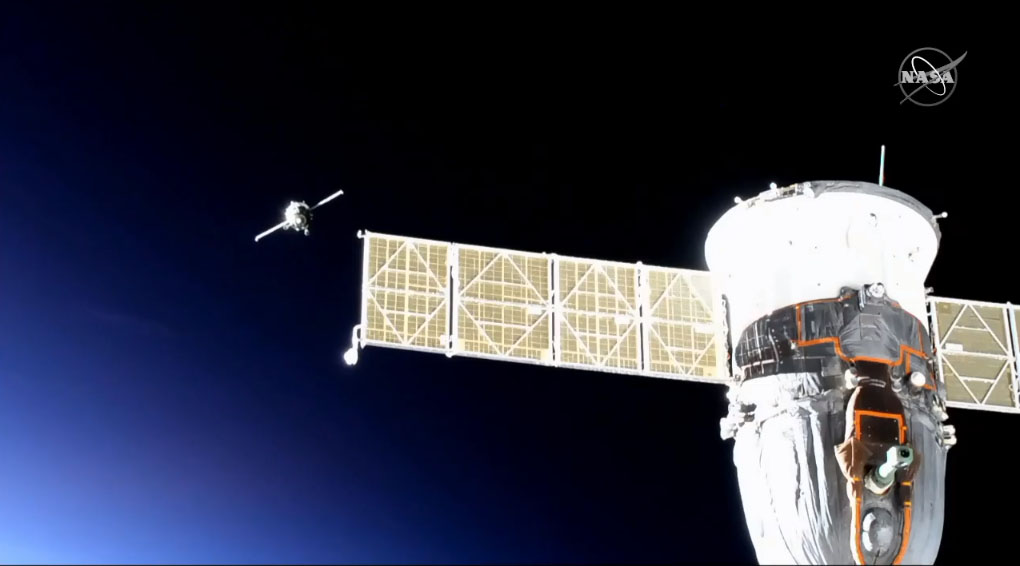
For the first time in history, a Russian Soyuz spacecraft linked up with the International Space Station without a human in the driver's seat.
Called Soyuz MS-14, the unpiloted spacecraft docked at the space station late Tuesday (Aug. 26), parking itself at a port on the aft end of the outpost's Russian Zvezda service module. It was the second attempt by Soyuz MS-14 to dock at the station after a Saturday try ended with a surprise abort.
"The second time was the charm," NASA spokesperson Rob Navias during live commentary just after the Soyuz docked. "A flawless approach." The space station was sailing 260 miles (418 kilometers) over eastern Mongolia when the Soyuz docked at at 11:08 p.m. EDT (0308 GMT).
Soyuz MS-14 is the first Soyuz capsule to visit the space station without a human crew. Russian space officials launched the spacecraft on a test flight on Aug. 22 using an upgraded Soyuz 2.1a rocket, a booster typically used to fly robotic Progress cargo ships. Roscosmos wanted to test an uncrewed Soyuz capsule with the upgraded rocket before actual crewed launches begin in March 2020.
Video: Watch the Soyuz Docking Abort as It Happened
Robot on board
While there was no human crew onboard Soyuz MS-14, the spacecraft was by no means empty.
Russia's space agency Roscosmos packed the spacecraft with 1,450 lbs. (658 kilograms) of food and other vital supplies to help keep the station crew stocked with the supplies. The centerpiece, however, is the humanoid Skybot F-850.
Get the Space.com Newsletter
Breaking space news, the latest updates on rocket launches, skywatching events and more!
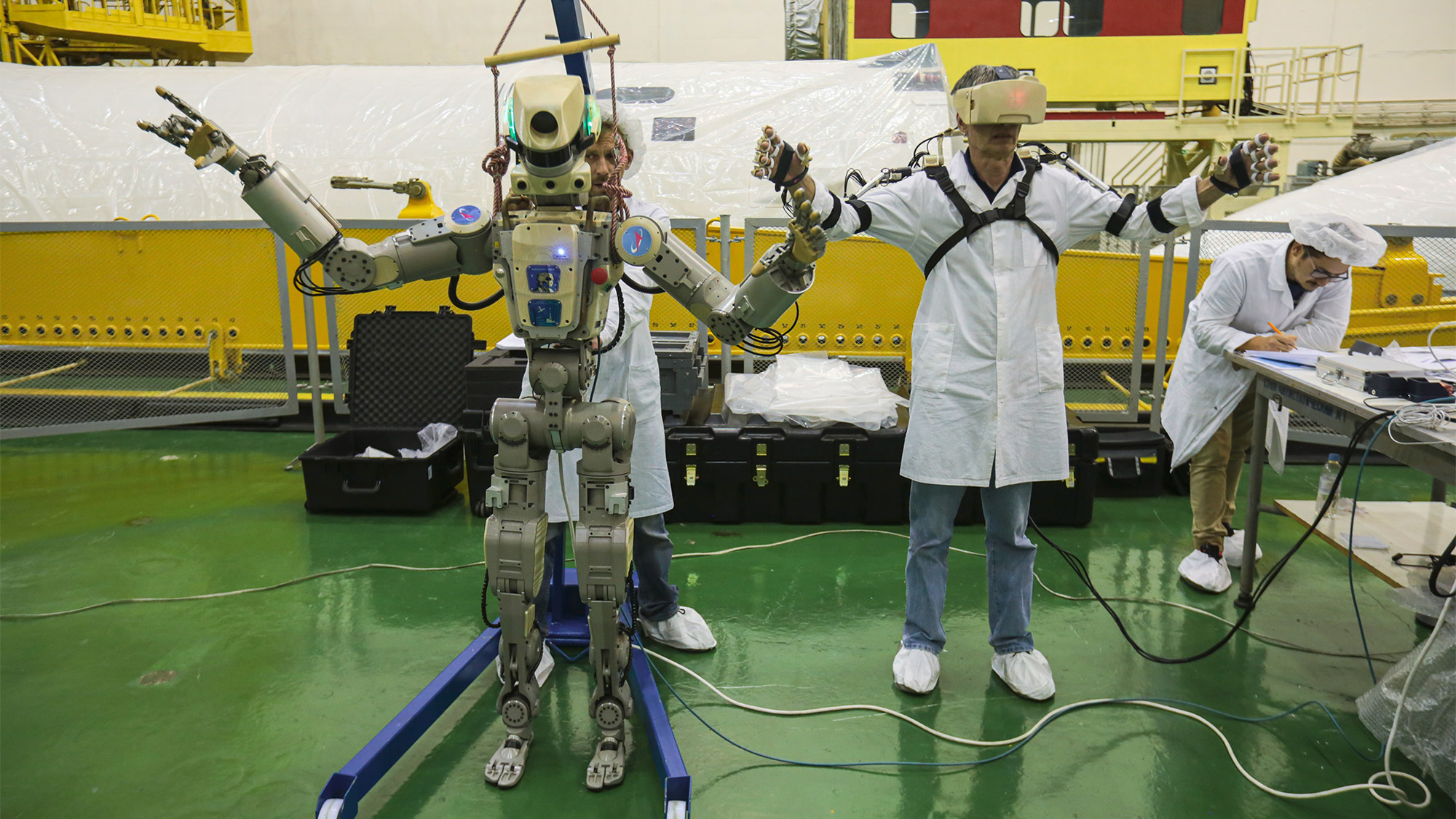
The 6-foot-tall (1.8 meters) robot sat in the commander's seat on Soyuz MS-14 during launch and recorded all manner of conditions, such as forces and vibrations, to give engineers an idea of what humans would experience on Soyuz 2.1a launches. Cosmonauts on the space station will also test the robot in space to see how it could make the crew's life easier.
Eventually, Roscosmos envisions the robot could one day help explore the surface of another world.
In Photos: Russia's Humanoid Skybot Robot for Space
An abort redeemed
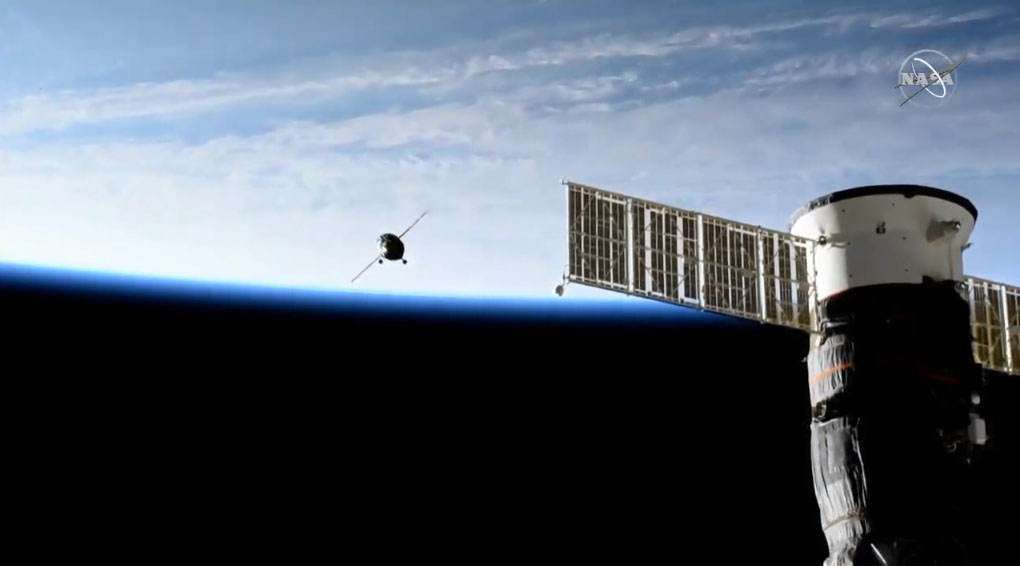
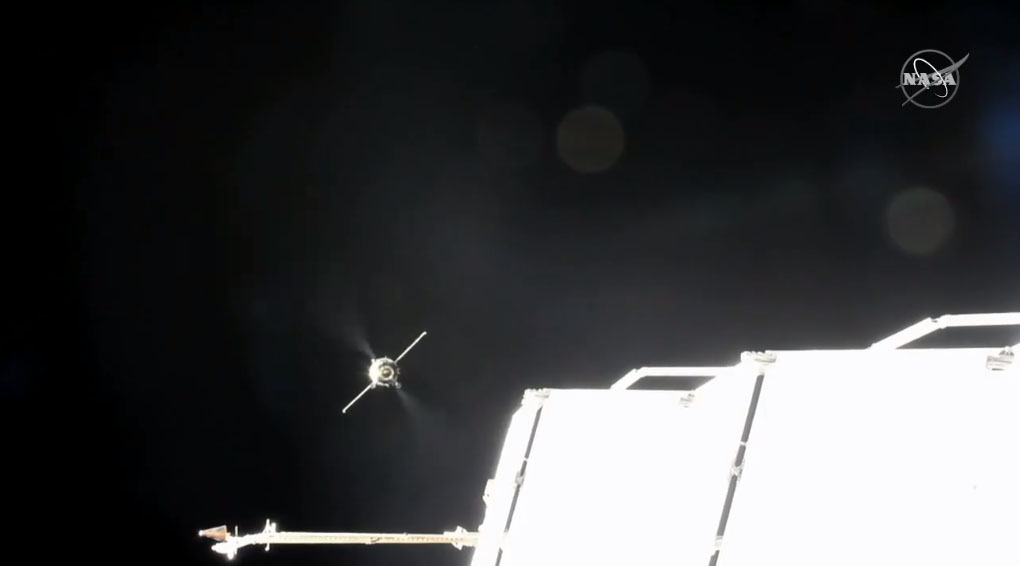
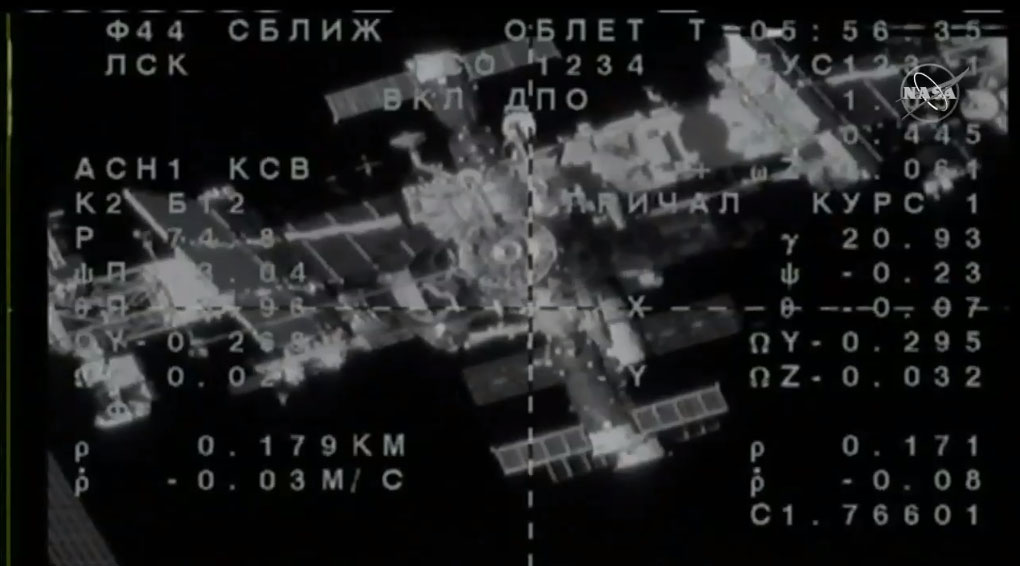
Sunday's Soyuz docking comes after busy weekend of spacecraft shuffling aboard the International Space Station to make way for the MS-14 spacecraft. The spacecraft was originally scheduled to dock at the station's top-mounted Poisk module on Saturday, but a problem with the automated rendezvous system on the module forced Soyuz to abort.
In order to clear the Zvezda module docking port for Soyuz MS-14, Russian cosmonaut Alexander Skvortsov and two crewmates (Andrew Morgan of NASA and Luca Parmitano of the European Space Agency) moved their own Soyuz spacecraft — called Soyuz MS-13 — to the Poisk port. Skvortsov flew the Soyuz manually, avoiding the rendezvous system problems seen by Soyuz MS-14, which does not have a human crew to take manual control.
Video: Soyuz Can't Lock On to Space Station Docking Port
Sunday's Soyuz move set the stage for Monday's second docking attempt by Soyuz MS-14, which went off without a hitch. The spacecraft approached planned, locked on to the station and docked itself smoothly to the Zvezda module. Cameras on the space station caught dazzling views of Soyuz MS-14 as it flew around the station.
"Congratulations are in order," Russian flight controllers radioed station commander Alexey Ovchinin and his six-person Expedition 60 crew after the docking. "You did a good job," another said.
Ovchini appeared to think it was just part of a job well done.
"We all did a good job," he said.
The comings and goings aren't finished yet at the space station. On Tuesday, a SpaceX Dragon cargo ship is scheduled to depart the space station and return to Earth. SpaceX launched the Dragon to the station on July 25 to deliver more than 5,000 lbs. (2,268 kilograms) of supplies for the Expedition 60 crew.
The Dragon resupply ship, which is on its third trip to the station, will be released from the outpost's robotic art at 10:42 a.m. EDT (1442 GMT) and return 2,700 pounds (1,225 kilograms) of science results and other gear to Earth. If all goes well, Dragon will splash down in the Pacific Ocean about 300 miles west of Long Beach, California to be retrieved later.
You can watch the Dragon ship's space station departure on Space.com Tuesday, Aug. 27. The webcast will begin at 10:15 a.m. EDT (1415 GMT).
- How Russia's Soyuz Space Capsules Work
- Roscosmos: Russia's Space Centers and Launch Sites in Pictures
- Cosmic Quiz: Do You Know the International Space Station?
Email Tariq Malik at tmalik@space.com or follow him @tariqjmalik. Follow us @Spacedotcom and Facebook.
Join our Space Forums to keep talking space on the latest missions, night sky and more! And if you have a news tip, correction or comment, let us know at: community@space.com.

Tariq is the Editor-in-Chief of Space.com and joined the team in 2001, first as an intern and staff writer, and later as an editor. He covers human spaceflight, exploration and space science, as well as skywatching and entertainment. He became Space.com's Managing Editor in 2009 and Editor-in-Chief in 2019. Before joining Space.com, Tariq was a staff reporter for The Los Angeles Times covering education and city beats in La Habra, Fullerton and Huntington Beach. In October 2022, Tariq received the Harry Kolcum Award for excellence in space reporting from the National Space Club Florida Committee. He is also an Eagle Scout (yes, he has the Space Exploration merit badge) and went to Space Camp four times as a kid and a fifth time as an adult. He has journalism degrees from the University of Southern California and New York University. You can find Tariq at Space.com and as the co-host to the This Week In Space podcast with space historian Rod Pyle on the TWiT network. To see his latest project, you can follow Tariq on Twitter @tariqjmalik.








